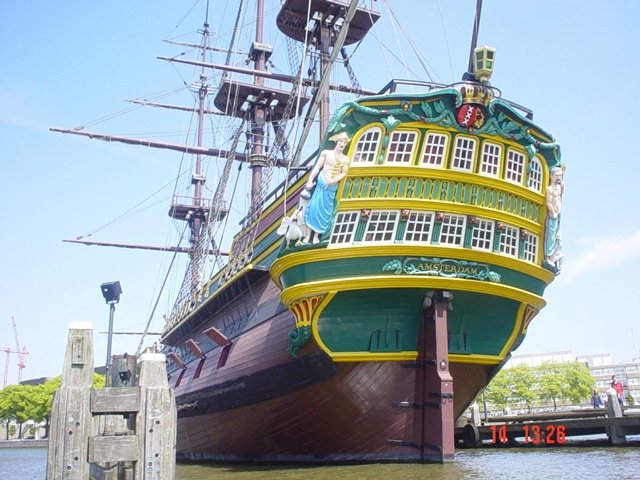If you put Google, Apple, and Microsoft together, Dutch East India Company was worth 3 times more.– What Made Them So Rich?
In 1637, The Dutch East India Company was Valued at a whopping 7.9 trillion dollars. It is by far one of the most exhilarating stories since its inception to its demise.

Originating in the Netherlands, in the time also known as the Golden Century between 1600 and 1700 where Amsterdam was one of the richest countries of the world due to its strong trade.
In 1600 the Dutch government happened to be worried about England becoming dominant in trade. To counter this problem they laid the foundations for the Dutch East India Company in 1602 and allowed the firm to become a monopoly in Asian trade

Between Europe and Indonesia, the Dutch East India Company became dominant in the spice trade. Trading spices, and the spices themselves was considered a staple of life; spices were rare and procured very scarcely hence the commodity itself as well as its trade was very valuable.
Fascinatingly enough, it was one of the very FIRST companies to go public on the world stock exchange hence it was deemed as one of the most prominent and important companies in history. It continued to grow, having 70 thousand employees at its peak in the 1600’s which actually constituted to the worlds 0.01% population at that time.

They built their own shipyard as well as a network of hundreds of bases. In order to keep their ports mobilized in trade, the Dutch East India Company even built their own army to protect the lands that they gained.
As the company grew the fine colonies gained more land and possessed a sense of governmental powers; they now had the power to not only wage war but to negotiate treaties, mint its own coins and even establish their own colonies.
The company was even used to fight against the Spanish empire in the 1900s. While reading all of this it is important to keep in mind this was a publicly traded company that possessed the power to do all this.
They also carried out expeditions that resorted to finding and discovering new lands so much so that it is a fact that the Dutch East India Company actually helped changed the geographic mapping of the world.
Staying operational for two centuries, it transformed the entire company – from a corporate entity into a state and then into a powerful Empire. While usually, people might opt to believe that he previously mentioned activity was the reason for its success but that in fact is not the truth.
How did the Dutch East India Company become so rich?
The majority of the Company’s wealth came from Tulips; which was its most profitable business. Tulips were introduced in Europe from Turkey and reached Amsterdam in 1554.
They instantly became the trend of that era and thus became a status symbol for the society. They took 7-12 months to flower and they bloom for about a week.
Its peculiar nature instilled the idea for it to be the first financial bubble in history – the tulip bubble. At that time the Dutch were the pioneers of the modern Finance and hence they devised a market that was set up in a way for you to trade tulips all year round even if they weren’t blooming. Prices were set by traders that tied to a contract based on future product prices.

It was, in fact, the very first futures divertive market which is quite similar to that which we use to trade stock presently. However, as time passed, the market became complex and flowers were priced according to their breed’s rareness. So the tulip prices were pushed to the highest by speculators who wished to turn around and sell it for a profit similarly to what happens in modern financial bubbles. Many merchants sold all that they had owned to purchase only a handful of tulip bulbs in hopes of making a profit.
The Dutch East India Company decided to include hat into their business model, the price of the tulip rocketed so much that it was equivalent to 12 times the pay of a craftsman. This is the moment of the company’s peak when it reached its 7.9 trillion dollar mark.
If you put Google, Apple, and Microsoft together, Dutch East India Company was worth 3 times more. After this peal, the tulip bubble then popped around late 1636. It was due to a handful of buyers who resided North of Holland who had refused to pay the flowers price should it be that high priced and refused to show up to routine tulip bulb auctions.
his caused the financial bubble to fail and so the Company faced a severe demise in 1799. The company was dissolved and overtaken by the government creating an Economic crash lasting for years. The settlements became Dutch colonies and everything faded away, but what remained so was the essential history of the Dutch East India Company that could serve for us as an example in the future.
Congratulations @khanwriting! You have completed the following achievement on the Steem blockchain and have been rewarded with new badge(s) :
Click on the badge to view your Board of Honor.
If you no longer want to receive notifications, reply to this comment with the word
STOPDo not miss the last post from @steemitboard: